Available filters Toggle display
- Category
- Price
Publications
Need to be tax-exempt?
Contact Laura Tharnish before ordering.
ltharnish2@unl.edu or 402-472-1576
-
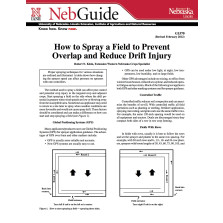
How to Spray a Field to Prevent Overlap
$1.00The method used to spray a field can affect pest control and potential injury to the targeted crop and adjacent crops. Proper spraying techniques for various situations are outlined and illustrated. A table shows how changing the sprayer speed can affect pressure on sprayers with rate controllers.
Topics include:
- Benefits of using GPS for sprayer guidance
- Spraying fields with rows and without rows
- Spraying field borders and while turning
- Handling irregular shaped fields
- Proper swath overlap
- Field speed
- Reducing drift injury
-

I Wonder
$4.95The I Wonder book encourages children to think about the world in which they live. Young readers will journey along with the amused explorer who shows curiosity about bees, butterflies and more! Learn More -
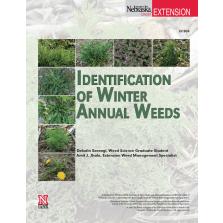
Identification of Winter Annual Weeds
$1.00This Extension Circular provides information and color photos to identify characteristics of winter annual weeds commonly found in Nebraska. Accurate identification is essential to effectively managing them. Learn More -
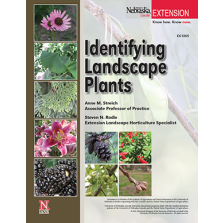
Identifying Landscape Plants
$4.25Plant identification is a very important basic skill for people wanting to make correct management decisions for their landscape plants. Application of pest management strategies and timing of management practices, such as pruning, fertilizing, and planting, all depend on correct plant identification. Learn More -
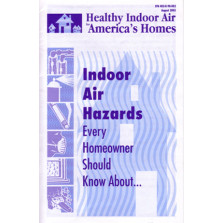
Indoor Air Hazards
$1.00This 24-page booklet, published through a partnership of Montana State University, EPA, and USDA, addresses consumer questions on biological pollutants like molds and dust mites, construction and remodeling by-products, combustion pollutants, lead dust, secondhand smoke, radon, problem household products, and asthma triggers.
It also offers a room-by-room home checklist of possible problem areas.
Format: 24 pages, 51/2 x 8 ½ inches
Learn More -
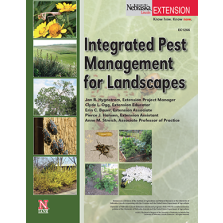
Integrated Pest Management for Landscapes
$3.00Chances are good that gardeners will have to deal with some type of pest during the year, whether that pest is a flea beetle chewing holes in a potato leaf, rabbits nipping lilies, dandelions invading the lawn, or early blight on tomatoes. Integrated Pest Management (IPM) is a strategy that uses a combination of methods to manage pests to avoid unacceptable damage while also protecting the health of humans, pets, and other nontargets, and the environment. Learn More -
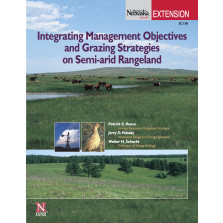
Integrating Management Objectives and Grazing Strategies on Semiarid Rangeland
$2.00Rangelands account for almost half of Nebraska's 24 million acres. Much of these expansive natural resource areas are in the semi-arid climatic region of Nebraska where grazing management decisions have a profound effect on ranch survival. This circular covers management practices that optimize the sustainability of rangeland and includes a decision-support tool for selecting grazing systems best suited to management objectives. Includes a chart of how differences in repoduction schedules, initial livestock weigh, and/or average daily gain affect animal unit equivalents in cow-calf and yearling enterprises.
Topics include:
- Importance of a grazing strategy – how to develop one and what to include
- Characteristics of various grazing systems, including season-long continuous, rest-rotation, deferred rotation, intensively managed
- How to select the best grazing system for your conditions and operation
- Best management practices
- Stocking rate adjustments
- Critical plant and animal interactions
- Evaluating a grazing plan
- Livestock production criterion
- Understanding and optimizing hydrologic condition of rangeland
- Planning for upland game birds
- Relative values of pastures
- Evaluating the likelihood of various systems to achieve specific management objectives
-
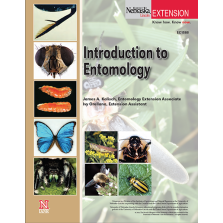
Introduction to Entomology
$4.25More than 100,000 insect species live in North America, and there are more than 1,000 insects in a typical backyard at any given time. This full-color introductory entomology guide includes close-up photos of insects and their body parts. Learn More -
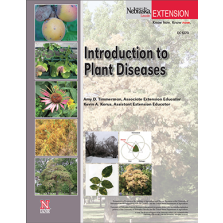
Introduction to Plant Diseases
$2.25An introduction to plant diseases for gardeners and landscape managers, this publication describes the types of plant diseases and life cycles, how to recognize disease, and the the best treatment methods. Learn More -
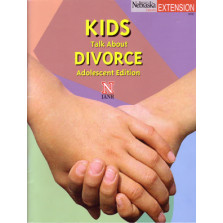
Kids Talk about Divorce - Adolescent Addition
$10.00Children are often the unseen victims of divorce. When their parents divorce, children are affected physically, emotionally, and mentally. Kids Talk About Divorce — Adolecent Edition is a research-based curriculum developed to help children in grades 6-8 or young adults whose parents are experiencing a divorce or were recently divorced. The course, which includes many activities, is designed to be taught in eight consecutive 40- to 50-minute sessions. It can be taught by a school employee, such as a school counselor or nurse, during lunch time, study hall, or after school.
Course topics include:
- Developing children’s awareness of the complexity of divorce
- Empowering them to cope with the divorce process
- Increasing children’s coping skills
- Strengthening their self-esteem